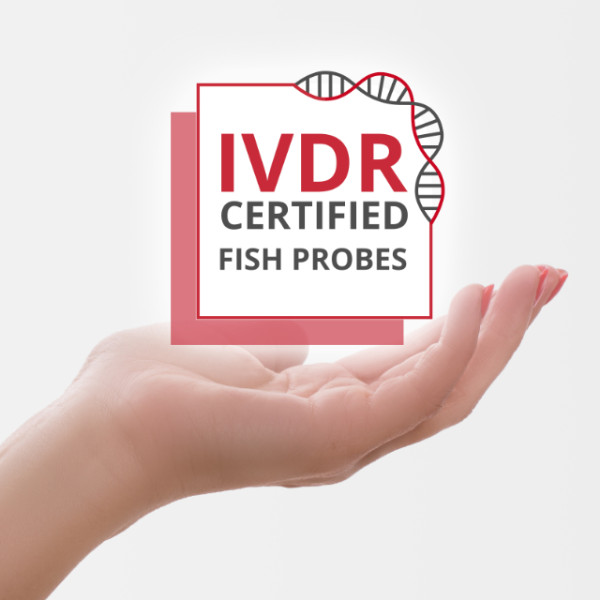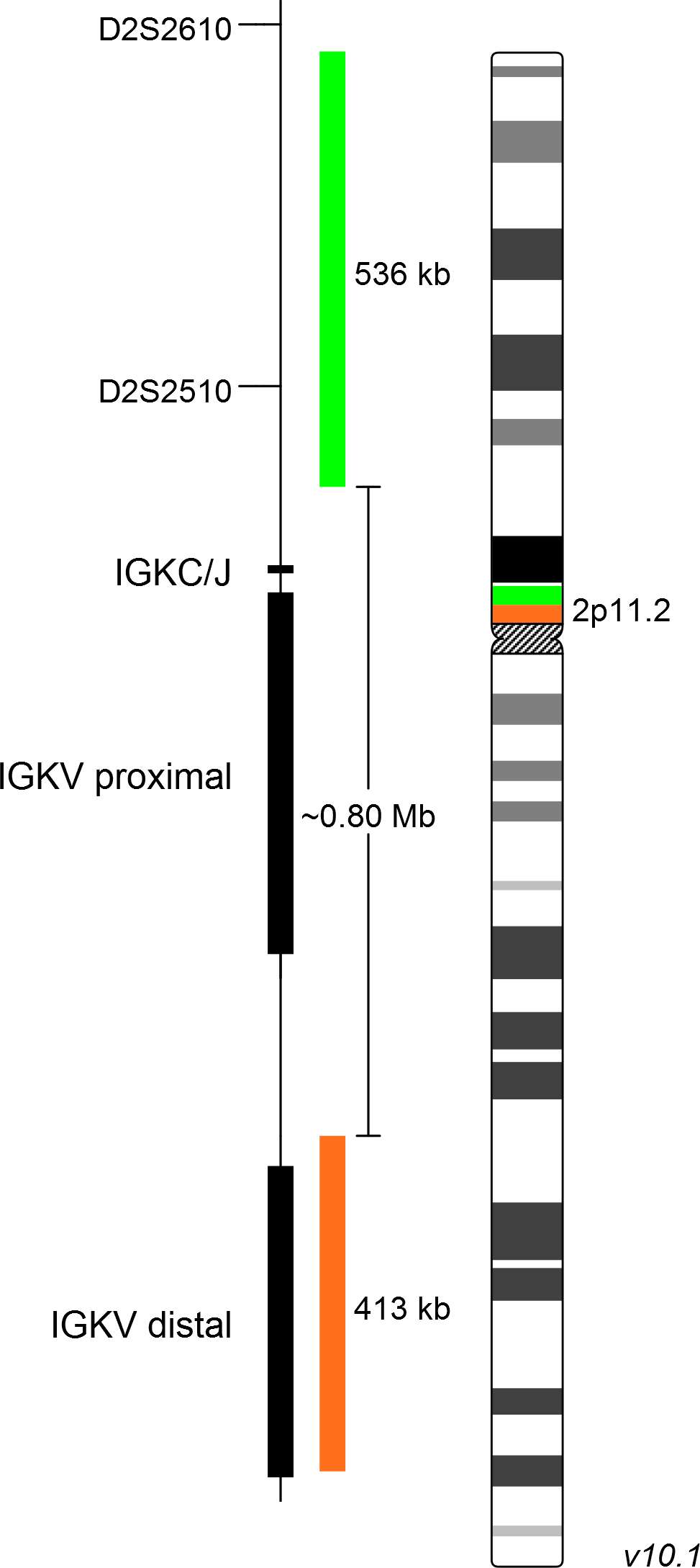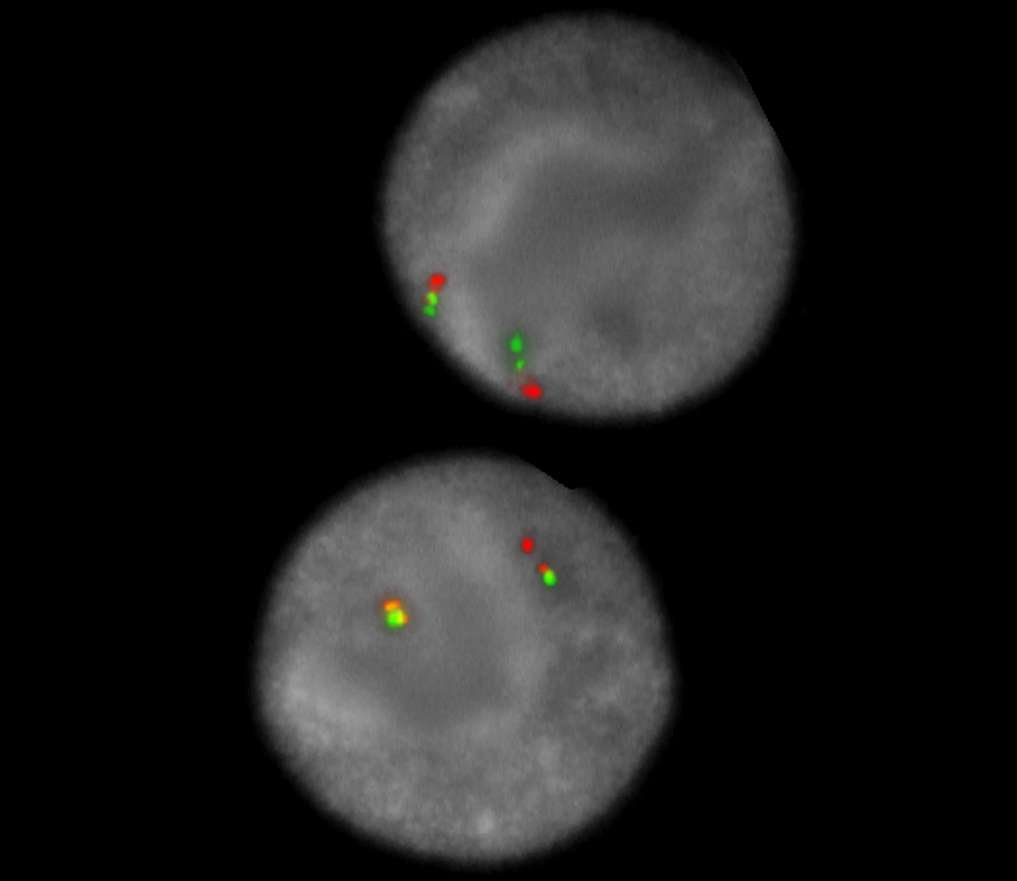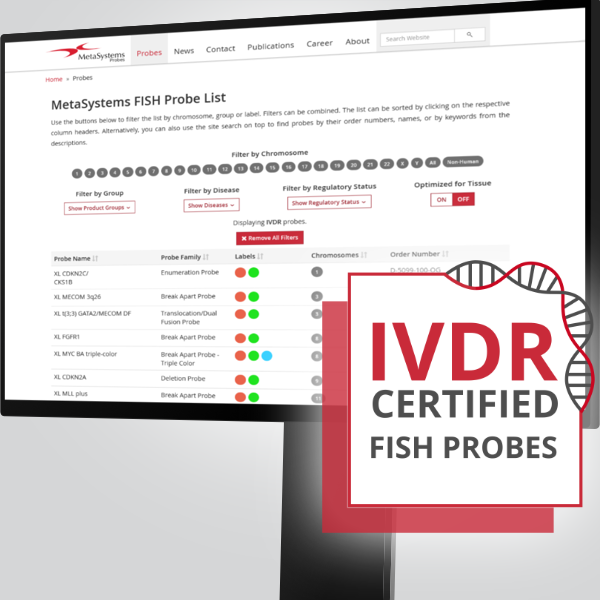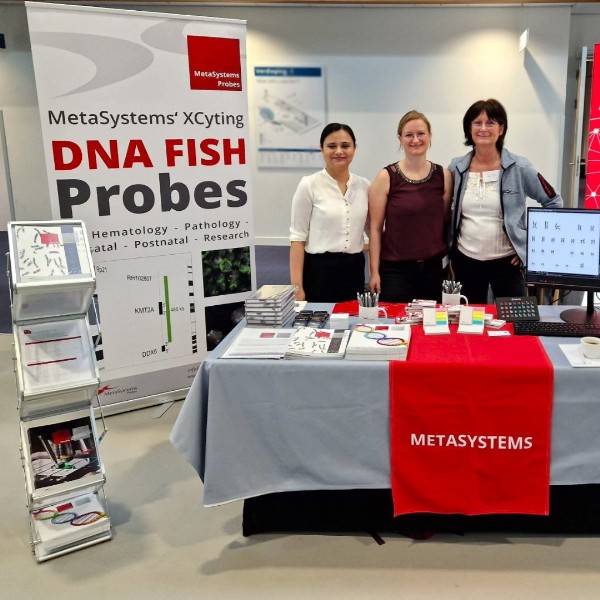The immunoglobulin (IG) genes for the kappa light chain at 2p11 (IGK), the lambda light chain at 22q11 (IGL) and the heavy chain at 14q32 (IGH) are recurrently involved in the development of non-Hodgkin lymphomas (NHL). By far most frequently involved is IGH with more than 30 partner genes, less frequently IGK and IGL. IG-translocations are leading to juxtaposition of proto-oncogenes with IG enhancer sequences resulting in overexpression of the respective oncogene. Chromosomal translocations involving MYC at 8q24 and IG genes frequently occur in Burkitt lymphoma (BL). BL is a rare but fast growing type of NHL which is rapidly fatal if left untreated. About 75% of BL patients are carrying the MYC rearrangement t(8;14) while the remainder show a translocation between MYC and IGK or IGL. MYC-IG rearrangements are also involved in other B-cell malignancies such as atypical Burkitt/Burkitt-like lymphoma, diffuse large B-cell lymphoma, follicular lymphoma, mantle cell lymphoma and multiple myeloma. Besides 8q24 (MYC), other translocation partners for IGK, such as chromosomal regions 1p13, 3q27 (BCL6), 7q21, 16q24 and 18q21 (BCL2), are known.
FISH break apart assays are valuable tools for the detection of IG light chain rearrangements independent of the translocation partner. Furthermore, double translocations have been described which are difficult to detect by PCR-based methods.
Clinical Applications
- Non-Hodgkin Lymphomas (NHL)
